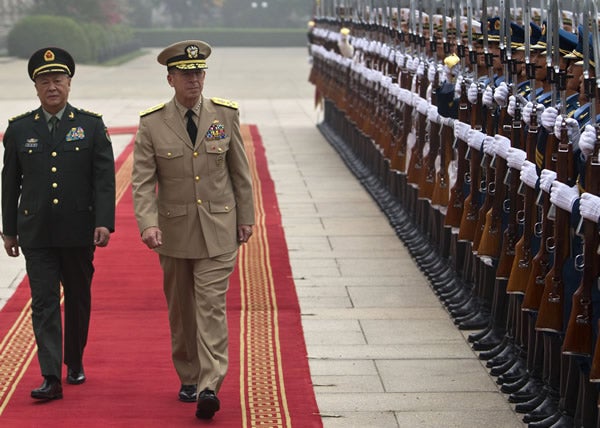As China prepares for the final plenum of the 17th Party Congress, it has announced that the new defense budget would amount to 670 billion RMB (approximately $106 billion), which equates to a 11.2 percent increase. This is in sharp contrast to the United States, which, despite a so-called “pivot to Asia,” is busily reducing its defense budget.
The increase in China’s defense spending, atop last year’s 12.7 percent increase, highlights that China’s defense spending is now larger than that of all other Asian nations combined—a sobering statistic when one considers that this includes the world’s third-largest economy (Japan) and North and South Korea, which remain locked in a Cold War–era standoff.
Many look at the U.S. defense budget and decry the fact that it is larger than the next dozen or so states combined. Yet the U.S. is a key enforcer of international norms and safety. It is the American Navy, more than any other, that keeps the world’s sea lanes safe. It is the U.S. Air Force that provides space situational awareness, including conjunction warnings, to all other space-faring nations (including China) and manages the GPS constellation to global benefit—both without charge.
By contrast, China’s military budget is spent almost entirely on Chinese interests. Of course, as the second-largest economy in the world, one would expect China to have a substantial military, and one should not draw alarm simply from Chinese defense spending increases. Yet instead of providing support for maintaining international order and sustaining global trade, Chinese military capabilities appear to be focused more on countering the U.S. Moreover, China’s military can focus on contingencies in close proximity to itself, whereas the U.S. military has global responsibilities. Thus, China can asymmetrically commit its resources against only a portion of the U.S. military and, in the event of a crisis, would likely try to defeat the U.S. in detail.
What should be of concern, then, is that the Chinese Communist Party appears to be increasingly asserting itself against its neighbors, whether it is expanding its forces opposite Taiwan or making claims of sovereignty over the South and East China Seas. In this regard, the People’s Liberation Army (PLA) is a tool, rather than the agent, for China’s growing antagonism with so many of its neighbors.
China’s increased defense spending, in this regard, signals a growing PLA capability against both neighbors and the U.S. While China regularly rejects any validity to being seen as a threat, the lack of Chinese transparency about intentions or decision-making processes, coupled with nearly two decades of unrelenting double-digit growth in defense spending, leaves few other options but to be concerned.
With the Chinese political transition underway, it would behoove Beijing to take the opportunity to be more open with its neighbors and partners—whether Japan, Taiwan, or the United States—in explaining the limits of Chinese claims of sovereignty and just how far its defense program is likely to go. Without such explanations, the U.S. has little choice but to increasingly focus its defense planning on Asian contingencies. And to do that credibly, it should reverse the decline in spending now proposed by the Obama Administration. Doing more with less, as dubiously envisioned by the “pivot” strategy, will not suffice for the task at hand.
